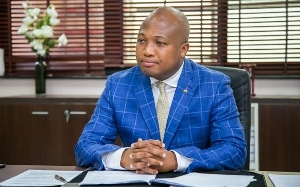Ghana’s public debt stock has grown by a whopping GHC70 billion representing a 200 per cent increase in the last four years,Business Finder’s analysis has revealed.
Total public debt moved from ¢35.1 billion in 2012 to GH¢105billon in March 2016 as confirmed by the Minister of Finance, Mr Seth Terkper recently.
This paper’s checks revealed that in a space of two years (2012 to 2014), the national debt increased by 117.4 percent from GHC35billion to GH¢76.1 billion, equivalent to 67.1 per cent of GDP from 48.8 per cent.
By June 2015, the total debt stock had reached a high of GHC96.9 billion, representing 72.7 percent of GDP.
The debt stock as at December 2015 stood at GHC100billion, equivalent to 72.9 percent of GDP, according to the Ministry of Finance.
Government sources indicate that only GH¢5billion was added to the debt stock within the first three months of 2016. Business Finder’s checks however revealed that government had borrowed GHC17.36billion by the end of the first quarter.
It will be recalled that the Bank of Ghana (BoG) in May this year published GHC99billion as the country’s public debt level as at December 2015.
In spite of concerns about government’s borrowing spree, Mr Terkper maintains it has been able to slow down debt accumulation.
“We are proud to note that, for the first time since the declaration of HIPC in 2001, we were able to first, slow down the rate of growth of debt accumulation between 2014 and 2015,” he told Parliament on Monday.
He is confident debt management strategies will help reduce the debt level substantially.
The Institute for Fiscal Studies (IFS) maintains that the huge surge in the country’s public debt stock is attributable to the large fiscal deficits registered over the years, which were financed by funds borrowed from both domestic and foreign sources.
Executive Director of the Institute, Prof Newman Kusi recalled that Ghana in 2014 continued to face a moderate risk of debt distress, although the overall debt vulnerabilities increased, and the country’s debt service-to-revenue ratio was approaching high-risk levels.
“Driven by loose fiscal policy, deteriorating financing terms and external pressures, several of the country’s domestic and external debt indicators also deteriorated; total public debt service-to-revenue ratio was not only on a rapidly increasing path but had breached its indicative long term threshold,” he pointed out.
Commenting on the issue, Economist at the University of Ghana, Legon, Dr Eric Osei Assibey described Ghana’s debt situation as a very difficult one, “particularly looking at the precarious nature of government’s financing needs.”
According to him, “It’s worrying because it is obvious that the economy is not doing well; businesses are suffering; energy challenges remain unresolved and so if the productive sectors are not working there is no way we can generate enough revenue to support developmental projects.”
Government must realise it cannot spend what it doesn’t have and must reduce its expenditure to conform to its revenue generation; this is the easiest way of avoiding a debt overhang.
Dr Assibey reminded government “you cannot say you are pursing fiscal consolidation and still maintain loose expenditure levels, particularly when your revenues are low.”
He warned against government’s resort to increasing taxes in a bid to rake in more revenue, noting that “frequent increment in taxes is itself inimical to the performance of the economy because high tax revenue has been shown to stifle economic growth as it increases tax avoidance, evasion and fraud.”
The economist reminded government that Ghana’s deal with the IMF spelt out clearly that government’s expenditures should be limited to priority areas of the economy.
Business News of Thursday, 28 July 2016
Source: thefinderonline.com
Ghana’s debt soars by 200% in just 4 years
Entertainment
















